
Lot 174
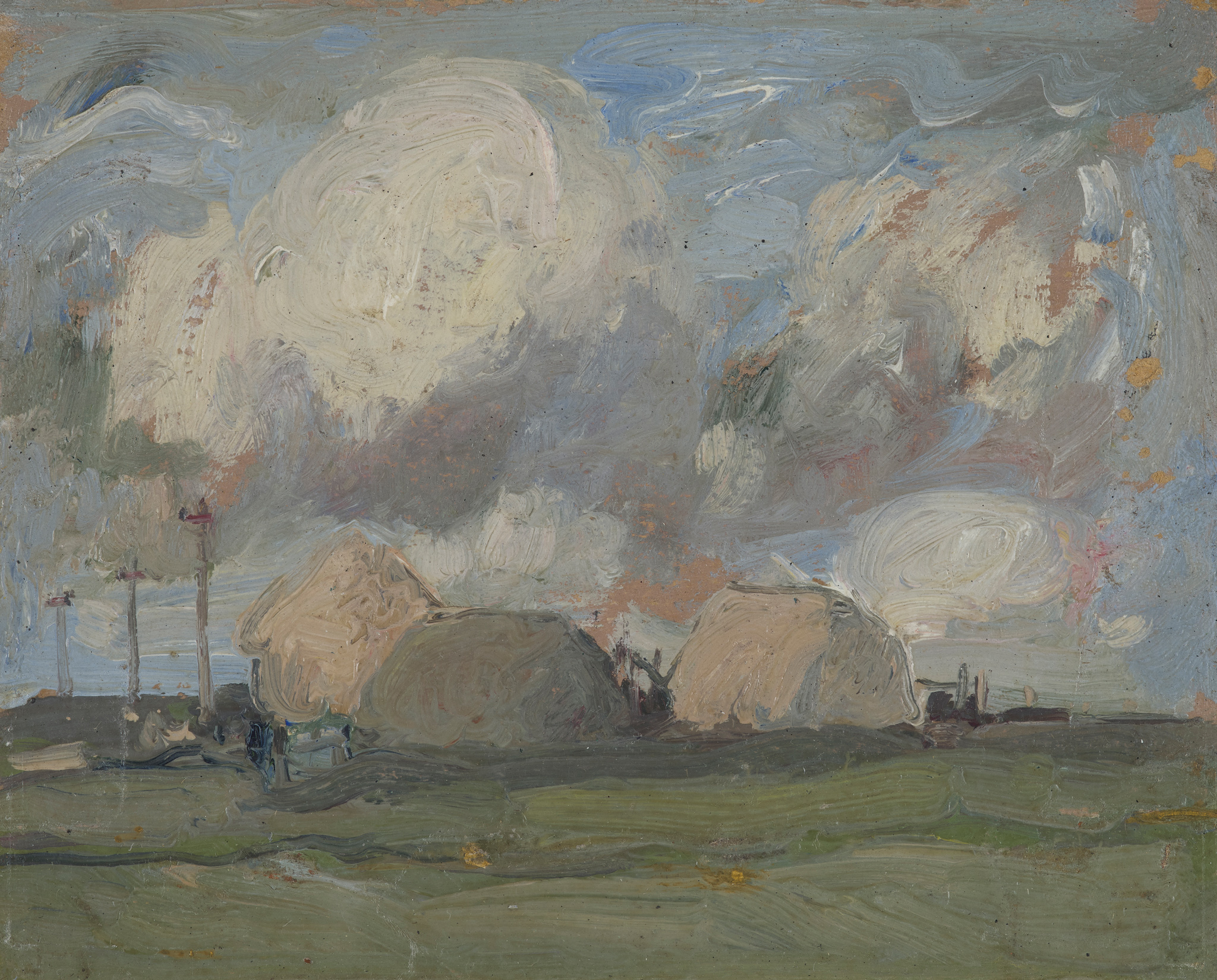
JOHN DUNCAN FERGUSSON R.B.A. (SCOTTISH 1874-1961) §
THE HAYSTACKS
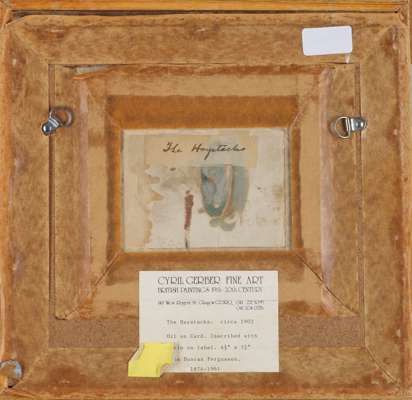
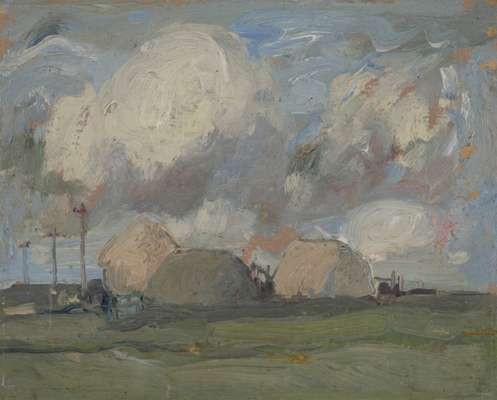
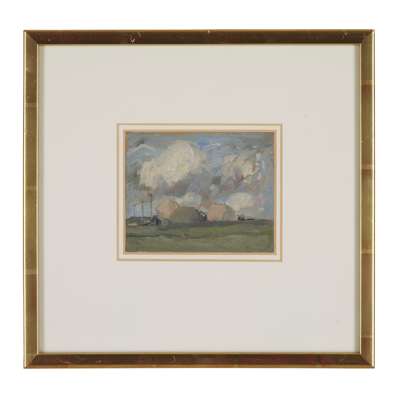



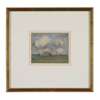

Scottish Paintings & Sculpture
Auction: Evening Sale | Lots 109 to 207 | Thursday 04 December 2025 from 6pm
Description
Inscribed with title to label verso, oil on card
Dimensions
11cm x 13.5cm (4.25in x 5.25in)
Provenance
Cyril Gerber Fine Art, Glasgow
Footnote
This work has been dated to c.1902.
John Duncan Fergusson was the Scottish Colourist with the most significant international reputation. He lived most of his adult life in Paris and London, before moving to Glasgow on the outbreak of the Second World War. His first solo exhibition was held in the English capital in 1906; he was elected a Sociétaire of the progressive Salon d’Automne in the French capital in 1909; and was represented in the Venice Biennale four times, beginning in 1909. He had two solo exhibitions in New York and another in Chicago and in 1931 one of his paintings was acquired for the French national collection.
The group of works presented here span some three decades of his long and prolific career, from the period when he first established himself in a studio at 16 Picardy Place in Edinburgh in 1902, to the thrill of moving to Paris in 1907 and the dramatic development of his practice thereafter. Also represented is his period in London, following the start of the First World War, as well as the idyllic months spent in the south of France during the Summer Schools held by his partner, the dance pioneer Margaret Morris, and his happy return to Paris from 1929 to 1939.
Sunlight in the Woods, Peebles, Midday, Peebles and The Haystacks date from the beginning of Fergusson’s career. Having spurned the traditional training available at the Trustees’ School of Art in Edinburgh, he determined to educate himself, including during spells at the Académies Julian and Colarossi in Paris. These three small-scale works are typical of those he painted in the French en plein air manner, responding directly to the rural scenes before him.
Place de l’Observatoire comes from a celebrated series of street scenes that Fergusson created following his move to the French capital in 1907. His use of brilliant colour and a freer technique heralded his emergence as a progressive artist. After Dinner Speaker reveals his enjoyment of Parisian café and restaurant society, whose elegant clientele he captured in sketches and more developed observational images, sometimes infused with humour, as seen here.
The sitter for La Parisienne, is believed to be the haute couture businesswoman Yvonne de Kerstratt, who was a key member of Fergusson’s circle in pre-First World War Paris. He recalled of this period:
“This was the life I had always wanted and often talked about. We were a very happy group: Anne [Estelle] Rice; Jo Davidson; Harry and Bill MacCall, Yvonne and [her brother] Louis de Kerstratt; Roffy the poet; La Torrie, mathematician and aviator…S. J. [Peploe]…said these were some of the greatest nights of his life. They were the greatest nights in anyone’s life.” (J. D. Fergusson, ‘Memories of Peploe’, The Scottish Art Review, vol.VIII, no.3, 1962, p.31)
Yvonne sat for Fergusson on several occasions, including for The Blue Hat, Closerie des Lilas of 1909, now in the collection of Culture Edinburgh (acc.no.CAC1962/2) and became the sculptor Jo Davidson’s first wife. La Parisienne reveals the extraordinary progression of Fergusson’s work once he was experiencing the latest developments in French art at first hand. The flattening and simplification of form, the black outlining and the contrast of bright red and blue show an in-depth exploration of the work of avant-garde artists such as Kees van Dongen and Auguste Chabaud.
Fergusson moved to London in 1914 and it was during that year that he created a series of portrait heads including Head of a Young Woman. Always drawn to feminine beauty and strength, Fergusson combines a sheer attractiveness of facial features with a sculptural approach to the sitter’s hair and neck in a way that can be linked to his celebrated sculpture Eástre (Hymn to the Sun) of 1924. In contrast, a more voluptuous approach to the female form is taken in Bather Descending a Staircase. Fergusson, Morris and her dance pupils enjoyed the climate of the south of France, sunbathing and swimming in the sea. This sense of well-being is conveyed in a rhythmical watercolour full of the warmth and sunshine of the region.
The group concludes with La Française, painted in 1931, two years after Fergusson had moved from London to Paris. Here one can sense the arabesques of the Art Deco movement in an image of refinement and beauty. Eight years later, Fergusson and Morris moved to Glasgow, where they did much to galvanise the local art scene. Fergusson died in the city in 1961, recognised as a leading artist of his generation.








